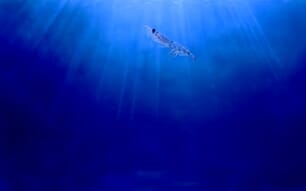Poxviruses are large, complex viruses with linear, doublestranded DNA (dsDNA) genomes that replicate entirely in the cytoplasm and infect insects (Entomopoxvirinae) and vertebrates (Chordopoxvirinae).
About half of the approximately 100 conserved genes of chordopoxviruses are also found in entomopoxviruses. The known chordopoxviruses have been divided into 10 genera and 1 unassigned genus by the International Committee on Taxonomy of Viruses.
Vertebrate hosts include reptiles, birds, and mammals. There are no reports on the occurrence of poxviruses in wild fish populations.
However, poxvirus-like particles have been found by transmission electron microscopy (TEM) in gills sampled during serious mortality of farmed koi carp (Cyprinius carpio L.) , ayu (Plecoglossus altivelis Temminck & Schlegel) , and Atlantic salmon (Salmo salar L., referred to here as salmon) .
In addition, a poxvirus-like sequence has been reported from koi carp.
Diagnostic use of a PCR assay based on this sequence suggests that the virus has spread through Europe and that the common grass carp (Ctenopharyngodon idella Valencienes) is also susceptible.
There appear to be two disease manifestations: carp edema in very small fry in winter and koi sleepy disease in larger juveniles in summer.
In carp edema, the entire fish is swollen and the fish swim close to the surface, akin to fish suffering from hypoxia.
In koi sleepy disease, the fish lie on the bottom in a lethargic state but swim away when touched. The gills are always affected, and skin and eye lesions may also occur.
Both manifestations are strongly alleviated by immersing the fish in 0.5% saline, but as infectivity is retained, the treatment could be merely symptomatic.
The ayu suffers a severe proliferative gill disease with large basophilic inclusions that correspond to poxvirus-like particles on TEM. In other cases where poxviruslike particles have been found in fish, no obvious inclusion bodies have been found using light microscopy.
Poxvirus infection in Atlantic salmon was suspected in the 1990s in cases of acute, high-mortality events in freshwater farms with juvenile fish (O. B. Dale and A. Kvellestad, unpublished data). Later, TEM images from diseased Atlantic salmon showed poxvirus-like particles that appeared to be distinct from those in carp, although both have a single lateral body like that found in entomopoxviruses instead of two lateral bodies like those found in other chordopoxviruses.
Based on material from fish with TEM findings similar to those described above, we present the first complete poxvirus genome from a fish and compare it with that of other chordopoxviruses.
Diagnostic tools derived from the sequence have allowed us to analyze the gill disease associated with salmon gill poxvirus (SGPV) in terms of pathology and the location of infection.
November 2015




